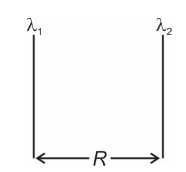Class 12th
Get insights from 12k questions on Class 12th, answered by students, alumni, and experts. You may also ask and answer any question you like about Class 12th
Follow Ask QuestionQuestions
Discussions
Active Users
Followers
New answer posted
a month agoContributor-Level 10
In reverse biasing, due to collision of electrons and atom, avalanche breakdown occurs.
New answer posted
a month agoContributor-Level 10
This negative sign is a result of the derivation of Lenz's law, which is used to signify the principle of conservation of energy. As per this law, the EMF always opposes the flow of magnetic flux in a circuit. And if this doesn't happen, the fundamental laws and theories of physics can be proved wrong by changing the magnetic flux.
New answer posted
a month agoContributor-Level 10
Galvanometer is a device having low resistance which is used to detect tiny bits of electric current scattered among different directions in the circuit. Whereas, a voltmeter is used to calculate the potential difference between two different points in the circuit. A galvanometer can also be used as a voltmeter if connected to high resistance in a series.
New answer posted
a month agoContributor-Level 10
They core difference between these two terms lies in the fact that self induction involves only one coil as compared to mutual induction involving two. In mutual induction, the change of electric current in one coil produces a magnetic field which results in generating EMF in the second coil. Whereas there is no concept of neighbouring coil in self induction and everything happens within the one coil itself.
New answer posted
a month agoContributor-Level 10
kx + y + 2z = 1. (i)
3x – y – 2z = 2 . (ii)
2x – 2y – 4z = 3. (iii)
(ii) * 5 (i) (iii) * 3 (15 – k) = 6
K = 21
New answer posted
a month agoContributor-Level 10
Let f (x) = x6 + ax5 + bx4 + ax3 + dx2 + ex + f
Non zero finite
So, d = e = f = 0
f (x) = x6 + ax5 + bx4 + cx3
Non zero finite
f' (x) =
f' (1) = 0
6 + 5a + 4b + 3 = 0
5a + 4b = - 9 . (i)
f' (-1) = 0
-6 + 5a – 4b + 3 = 0 . (ii)
Solving (i) and (ii)
a -3/5, b = -3/2
New answer posted
a month agoContributor-Level 10
With the help of conservation of volume, we can write
With the help of conservation of charge, we can write
Q = 27 q.(2)
Potential energy of single drop = U1 =
Potential energy of bigger drop =
Taking an Exam? Selecting a College?
Get authentic answers from experts, students and alumni that you won't find anywhere else
Sign Up on ShikshaOn Shiksha, get access to
- 65k Colleges
- 1.2k Exams
- 678k Reviews
- 1800k Answers


